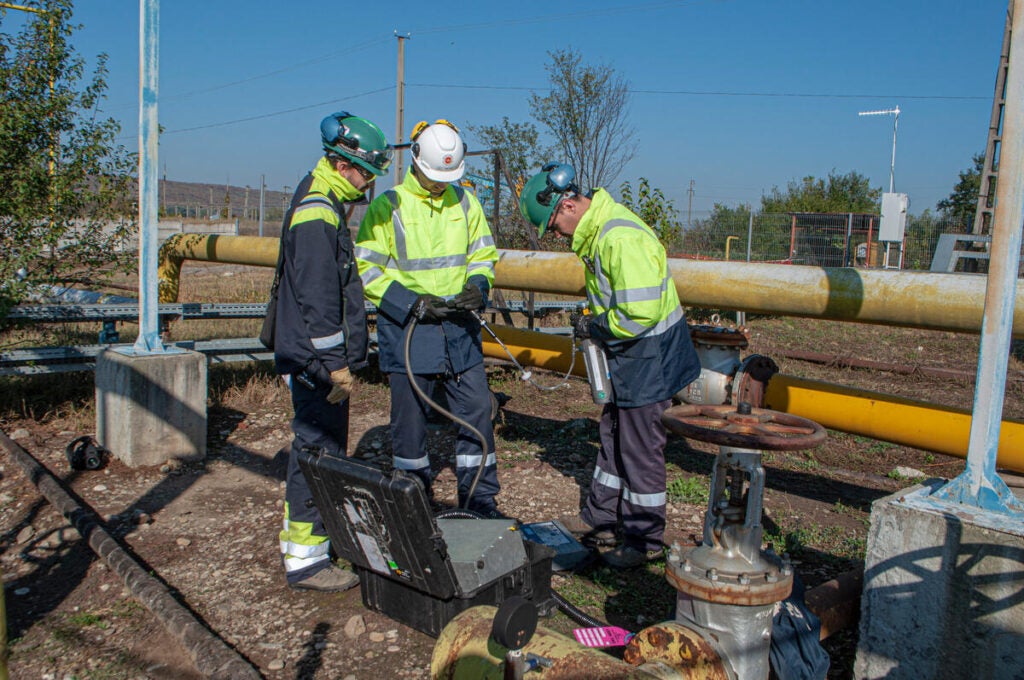Robust, reliable data is key to unlocking global methane reductions

Amidst all the positive momentum behind reducing global oil and gas methane emissions lies a critical challenge: If we’re going to reduce global methane emissions, we need accurate and trustworthy numbers to define the scope of the problem, assess company and country performance and track emissions over time and against reduction goals.
Because you can’t manage what you don’t measure, accurately.
EDF has long urged operators and officials to implement robust measurement, reporting and verification standards and programs. The Oil and Gas Methane Partnership, OGMP 2.0, which we helped develop, provides a solid pathway to improve data quality and establishes multi-scale measurement-based estimates as the gold standard for reporting.
Regulators aren’t the only ones interested in this data. Gas importers and exporters are increasingly zeroing in on methane emissions in the natural gas supply chain. That’s why we’re also helping establish guidance on differentiated gas — natural gas claimed by sellers to be produced and transported with fewer methane emissions.
A sound MRV framework can be a powerful tool to ensure that operators’ claims of superior methane performance are backed by credible, measurement-based data. What should that framework look like?
Measurement based, accurate data
Methane is invisible and odorless, and it can leak anywhere along the world’s vast oil and gas infrastructure. Until recently, few companies have been required to even look for leaks, much less measure and report them. This means they lack experience in developing processes and procedures allowing for a comprehensive accounting of real-world emissions.
The reporting that does exist has relied not on systematic measurement, but rather generic emissions factors and engineering calculations that substantially underestimate emissions.
That’s what drove groundbreaking research in the United States, Canada, Mexico, Europe and other energy-producing regions that discovered real-world methane emissions far exceed the levels energy companies and national inventories report. These studies showed we must rely on measurements, not generic estimates, to develop trustworthy and reliable emission numbers.
Focus on methane
Some inventories roll up all greenhouse gases, including carbon dioxide and methane, into one number. That’s useful for some purposes because we need to drastically reduce both. But methane has far greater warming potential in the short term, and therefore methane reductions can have more impact more quickly. To unlock the climate opportunity methane mitigation presents, we need a complete and accurate accounting of total methane emissions, alone.
Data and methods must be transparent
More and more companies are exploring methane measurement technology and programs. That’s a very positive development, but now it’s important to establish strong methodologies.
From measurement methodology to data processing to public disclosure of emission data, MRV programs must be transparent if they are to build trust with governments, investors, shareholders and the public. Moreover, transparency helps create compatibility and comparability with other companies’ and country’s emission data.
Methane data must be complete and verified
It’s also critical that emissions from all sites within a given oil and gas asset are characterized in an unbiased way, to avoid cherry-picking the best-performing facilities. Measurements must be frequent enough — not single snapshots — to capture both persistent and intermittent emission sources and consider the right monitoring technologies that are able to capture emissions from both small and large sources.
In addition, companies using new measurement technologies and techniques should demonstrate their reliability and accuracy in the real world, and emission rates and totals should be compared to independent data. UNEP’s International Methane Emissions Observatory, IMEO, will play a key role in this step by developing an integrated and publicly available data platform for methane emissions data.
Keeping our eyes on the prize
Finally, it’s important to stay laser-focused on the goal of all these efforts and standards. The world must mobilize to take action on methane, and measurement data everyone can trust, understand and compare is a critical ingredient. We won’t solve this problem without it.
That’s one reason we developed MethaneSAT, the world’s most advanced methane-tracking satellite. When it launches in 2024, MethaneSAT will allow us to measure methane emissions from 80% of the world’s oil and gas production with unparalleled precision. Together with other satellites, MethaneSAT will enable us, for the first time, to calculate total methane emissions from the vast majority of the oil and gas-producing regions and track them over time. And it will help countries and companies fill critical data gaps in their current and future emission reduction efforts.










